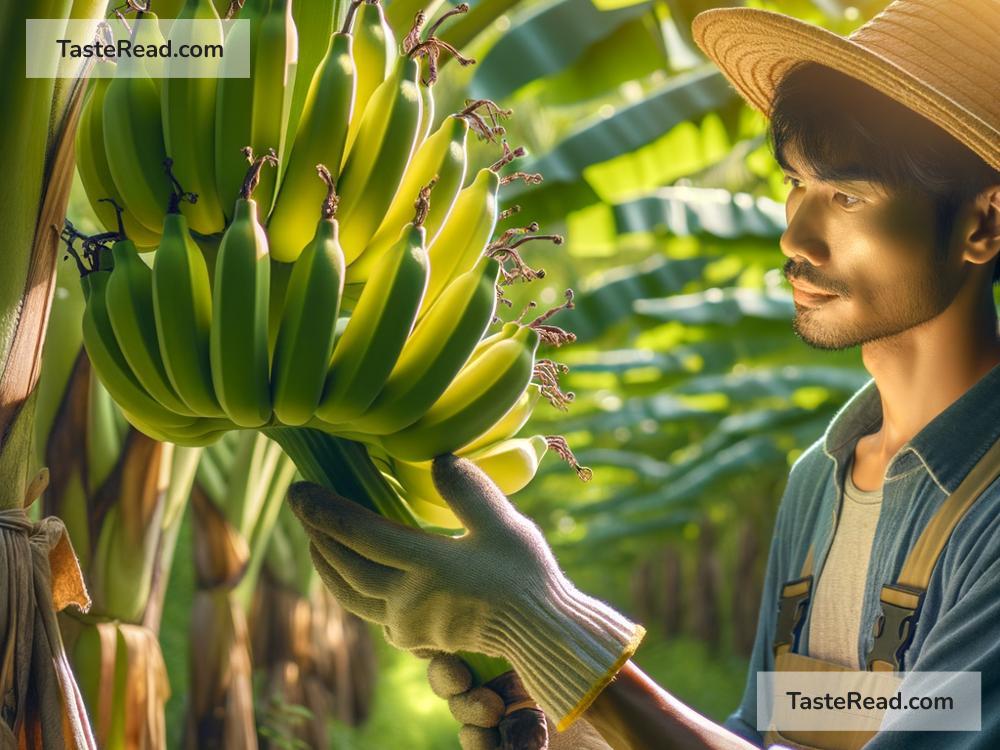The Fascinating Evolution of Bananas as a Cultivated Fruit
When most people think of bananas, they picture the sweet yellow fruit that you can find in every grocery store or hanging from trees in tropical regions. Bananas are so common that many of us take them for granted. But the story of how bananas became the fruit we know today is full of fascinating twists and turns. From wild, seed-filled fruits to the smooth, soft bananas we eat today, their journey through history is an incredible example of human influence on agriculture.
The Origins of Bananas
Bananas didn’t start out as the convenient, easy-to-eat fruits we recognize today. Scientists believe bananas first appeared over 7,000 years ago in Southeast Asia, specifically in regions like Indonesia, Malaysia, and the Philippines. The earliest bananas were quite different from the ones we eat today—they had large seeds inside and less flesh. They were not as sweet, and biting into one likely felt more like chewing a mix of seeds and pulp than enjoying a smooth, creamy snack.
Wild bananas grew naturally in tropical areas, and they were part of the diets of early humans living in those regions. These people began cultivating bananas, choosing plants that had fewer seeds and more flesh. Over time, farmers learned to modify plants, creating crops that were easier to eat and more enjoyable. This process—choosing the best plants to grow and reproduce—is called “selective breeding.”
How Bananas Spread Across the World
Bananas didn’t remain confined to Southeast Asia for long. Around 2,000 years ago, bananas began traveling. Traders and explorers carried the fruit to new places like India, Africa, and the Middle East. Bananas thrived in these regions because they grew well in warm climates with plenty of rain.
From Africa, bananas made their way to Europe and the Americas during colonial times. Historians believe Portuguese sailors were among the first to introduce bananas to tropical areas in South America during the 15th and 16th centuries. As banana plants spread to new regions, people continued to shape the fruit, growing varieties suited to local tastes and conditions.
By the 19th century, bananas were a novelty in Europe and North America. Wealthy people marveled at this tropical fruit, often displaying it at fancy dinners. But bananas truly became popular with the rise of transportation and refrigeration in the late 1800s and early 1900s. Ships, trains, and cold storage made it possible to grow bananas in tropical climates and then ship them thousands of miles to colder countries where people couldn’t grow their own.
The Creation of Modern Bananas
The bananas we eat today are mostly from one specific variety called the Cavendish banana. This variety became popular because it’s sweet, has no seeds, and survives long journeys without spoiling. However, modern bananas differ greatly from other banana types that were once common.
Before the Cavendish became dominant, another variety called the Gros Michel was the favorite banana worldwide. Gros Michel bananas were a bit bigger and creamier than Cavendish bananas. Unfortunately, in the mid-20th century, a disease called “Panama disease” wiped out most Gros Michel banana plants. Farmers had to switch to the Cavendish, which was more resistant to the disease.
The Cavendish banana proved to be a good replacement, but it also has its vulnerabilities. Because commercial banana farms often grow only one type of banana, these farms lack genetic variety. This makes them more prone to diseases that could affect the entire crop. Today, scientists and farmers are working hard to find new banana varieties or solutions to disease threats to protect the future of this beloved fruit.
More Than Just Food
Bananas have been cultivated for centuries not just as food but as an important part of culture and tradition. In many countries, bananas are symbols of health, fertility, and community. In some areas of Africa and Asia, banana trees are even used for construction or crafting materials, while the leaves are used for cooking or wrapping food.
Bananas also play a role in connecting people. From street vendors selling bananas in bustling markets to farmers growing bananas on large plantations, millions of people have jobs tied to bananas. The banana trade is a major part of the global economy, especially for countries in Latin America, Asia, and Africa.
Looking Ahead: The Future of Bananas
The evolution of bananas is far from over. As we’ve seen with diseases like Panama disease, the cultivation of bananas faces challenges that could change the fruit once again. Scientists are combining traditional farming methods with modern technology to breed new banana varieties that are tastier, healthier, and more resistant to threats.
Bananas may also play a bigger role in sustainability in the future. Farmers are constantly experimenting with ways to grow bananas in eco-friendly ways that use fewer chemicals and less water while preserving soil health. There’s also growing interest in developing more uses for bananas, from creating banana-based biodegradable packaging to using banana waste to produce energy.
Conclusion
Bananas are more than just a sweet snack; they’re a product of thousands of years of history, farming, and human ingenuity. From their wild origins in Southeast Asia to being a staple fruit enjoyed worldwide, bananas have come a long way. The journey hasn’t been easy, with challenges such as disease outbreaks and farming struggles, but bananas continue to adapt, just as they always have. As we look to the future, bananas remind us of the incredible power humans have to shape the food we eat—and the importance of protecting crops that bring joy and nutrition to millions of people.


